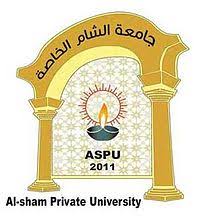اشترك بالحزمة الذهبية واحصل على وصول غير محدود شمرا أكاديميا
تسجيل مستخدم جديدKinetics of Oscillating Neutrinos
240
0
0.0
(
0
)
تأليف
P. Strack
اسأل ChatGPT حول البحث

ﻻ يوجد ملخص باللغة العربية
In the context of core-collapse supernovae, Strack and Burrows (Phys. Rev. D 71, 093004 (2005)) have recently developed an extension of the classical Boltzmann kinetic formalism that retains all the standard neutrino oscillation phenomenology, including resonant flavor conversion (the MSW effect), neutrino self-interactions, and the interplay between neutrino-matter coupling and flavor oscillations. In this thesis, I extend the Strack & Burrows formalism to incorporate general relativity, spin degrees of freedom, and a possible neutrino magnetic-moment/magnetic-field interaction.
قيم البحث
اقرأ أيضاً
In the standard approaches to neutrino transport in the simulation of core-collapse supernovae, one will often start from the classical Boltzmann equation for the neutrinos spatial, temporal, and spectral evolution. For each neutrino species, and its
anti-particle, the classical density in phase space, or the associated specific intensity, will be calculated as a function of time. The neutrino radiation is coupled to matter by source and sink terms on the right-hand-side of the transport equation and together with the equations of hydrodynamics this set of coupled partial differential equations for classical densities describes, in principle, the evolution of core collapse and explosion. However, with the possibility of neutrino oscillations between species, a purely quantum-physical effect, how to generalize this set of Boltzmann equations for classical quantities to reflect oscillation physics has not been clear. To date, the formalisms developed have retained the character of quantum operator physics involving complex quantities and have not been suitable for easy incorporation into standard supernova codes. In this paper, we derive generalized Boltzmann equations for quasi-classical, real-valued phase-space densities that retain all the standard oscillation phenomenology, including resonant flavor conversion (the MSW effect), neutrino self-interactions, and the interplay between decohering matter coupling and flavor oscillations. With this formalism, any code(s) that can now handle the solution of the classical Boltzmann or transport equation can easily be generalized to include neutrino oscillations in a quantum-physically consistent fashion.
Two and three flavor oscillating neutrinos are shown to exhibit the properties bipartite and tripartite quantum entanglement. The two and three flavor neutrinos are mapped to qubit states used in quantum information theory. Such quantum bits of the n
eutrino state can be encoded on a IBMQ computer using quantum computing as a tool. We show the implementation of entanglement in the two neutrino system on the IBM quantum processor.
We derive a suite of generalized Boltzmann equations, based on the density-matrix formalism, that incorporates the physics of neutrino oscillations for two- and three-flavor oscillations, matter refraction, and self-refraction. The resulting equation
s are straightforward extensions of the classical transport equations that nevertheless contain the full physics of quantum oscillation phenomena. In this way, our broadened formalism provides a bridge between the familiar neutrino transport algorithms employed by supernova modelers and the more quantum-heavy approaches frequently employed to illuminate the various neutrino oscillation effects. We also provide the corresponding angular-mome
The texture zero mass matrices for the leptons and the seesaw mechanism are used to derive relations between the matrix elements of the lepton mixing matrix and the ratios of the neutrino masses.
By exerting mechanical force it is possible to unfold/refold RNA molecules one at a time. In a small range of forces, an RNA molecule can hop between the folded and the unfolded state with force-dependent kinetic rates. Here, we introduce a mesoscopi
c model to analyze the hopping kinetics of RNA hairpins in an optical tweezers setup. The model includes different elements of the experimental setup (beads, handles and RNA sequence) and limitations of the instrument (time lag of the force-feedback mechanism and finite bandwidth of data acquisition). We investigated the influence of the instrument on the measured hopping rates. Results from the model are in good agreement with the experiments reported in the companion article (1). The comparison between theory and experiments allowed us to infer the values of the intrinsic molecular rates of the RNA hairpin alone and to search for the optimal experimental conditions to do the measurements. We conclude that long handles and soft laser traps represent the best conditions to extract rate estimates that are closest to the intrinsic molecular rates. The methodology and rationale presented here can be applied to other experimental setups and other molecules.
سجل دخول لتتمكن من نشر تعليقات
التعليقات
جاري جلب التعليقات


سجل دخول لتتمكن من متابعة معايير البحث التي قمت باختيارها


